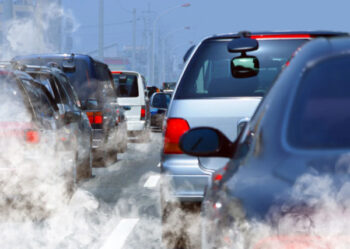By John Patterson
Staff Writer for Wake Up World
Air pollution has long been a topic of concern, but recent research has uncovered a startling connection between short-term exposure to air pollution and an increased risk of stroke. Published in the September 27, 2023, issue of Neurology®, the medical journal of the American Academy of Neurology, this meta-analysis serves as a wake-up call for us to address the pressing issue of air pollution, not just for our planet but for the safety of our own lives.
[pro_ad_display_adzone id=”110028″]
Unmasking the Link: Short-Term Air Pollution Exposure and Stroke
Dr. Ahmad Toubasi, the study’s author from the University of Jordan in Amman, explains the groundbreaking nature of their research. “Previous studies had already demonstrated a link between long-term exposure to air pollution and an increased risk of stroke,” Dr. Toubasi says. “However, our study aimed to investigate the correlation between short-term exposure, specifically within five days, and the occurrence of stroke. What we found is both concerning and enlightening.”
Digging into the Data: A Comprehensive Meta-Analysis
This eye-opening meta-analysis comprised a thorough examination of 110 studies, encompassing over 18 million stroke cases worldwide. Researchers scrutinized a range of pollutants, including nitrogen dioxide, ozone, carbon monoxide, and sulfur dioxide. In addition, they delved into the various sizes of particulate matter, such as PM1, PM2.5, and PM10.
The Shocking Revelations: Air Pollution’s Grim Impact on Stroke Risk
The findings of the meta-analysis serve as a stark reminder of the perils of air pollution. People exposed to higher concentrations of air pollution faced an increased risk of stroke within just five days. The statistics are chilling:
- Nitrogen dioxide was linked to a staggering 28% higher risk of stroke.
- Ozone levels, often associated with smog and urban areas, raised the risk by 5%.
- Carbon monoxide, a common byproduct of combustion, showed a concerning 26% increase in stroke risk.
- Sulfur dioxide, commonly released by industrial processes, contributed to a 15% increase in risk.
- PM1, the smallest particulate matter, increased the risk by 9%.
- PM2.5, found in motor vehicle exhaust and industrial emissions, was associated with a 15% higher risk.
- PM10, including dust from roads and construction sites, was linked to a 14% elevated risk.
The impact didn’t stop there. Higher levels of air pollution were also correlated with a higher risk of death from stroke. The numbers are sobering:
- Nitrogen dioxide led to a shocking 33% higher risk of stroke-related mortality.
- Sulfur dioxide, notorious for its role in acid rain, increased stroke-related deaths by a staggering 60%.
- PM2.5 was associated with a 9% higher risk of stroke-related death.
- PM10, despite being larger in size, still contributed to a 2% increase in stroke-related deaths.
The Urgent Call to Action: Mitigating Air Pollution for Our Health
Dr. Toubasi emphasizes the urgency of addressing this issue. “There is a strong and significant association between air pollution and the occurrence of stroke as well as death from stroke within five days of exposure,” he warns. “This highlights the importance of global efforts to create policies that reduce air pollution. Doing so may reduce the number of strokes and their consequences.”
A Global Challenge: Overcoming Limitations
It’s important to note that most of the studies included in this meta-analysis were conducted in high-income countries. Limited data was available from low- and middle-income countries. This underscores the need for global cooperation and concerted efforts to combat air pollution on a broader scale.
Practical Conclusion: Protecting Yourself and the Planet
As we face the sobering reality of the link between air pollution and stroke risk, it’s crucial to take action both individually and collectively. Here are some practical steps you can take:
[pro_ad_display_adzone id=”110030″]
- Monitor Air Quality: Stay informed about air quality in your area. Use apps or websites that provide real-time air quality data to help you plan outdoor activities on days with lower pollution levels.
- Reduce Personal Exposure: Limit outdoor activities on days when air pollution levels are high.
- Support Green Initiatives: Advocate for policies that reduce air pollution and promote sustainable transportation options.
- Promote Sustainable Practices: Reduce your carbon footprint by using public transportation, carpooling, or using bicycles for short trips.
- Educate and Raise Awareness: Share this important research and its implications with your friends and family. Encourage them to take action to reduce air pollution collectively.
In conclusion, our health is intricately linked to the quality of the air we breathe. The evidence is clear: short-term exposure to air pollution can significantly increase the risk of stroke. It’s time for us to wake up to the urgent need to combat air pollution, not only for the sake of our planet but for our own well-being. Together, we can make a difference and protect ourselves and future generations from the devastating consequences of air pollution.
Reference:
- Ahmad Toubasi, Thuraya N Al-Sayegh. Short-term Exposure to Air Pollution and Ischemic Stroke: A Systematic Review and Meta-analysis. Neurology, 2023; 10.1212/WNL.0000000000207856 DOI: 10.1212/WNL.0000000000207856
About the author:
John Patterson is an avid writer and researcher who delves into the latest scientific research. With an insatiable curiosity, he translates complex concepts into accessible narratives, allowing readers to embark on a journey of discovery. Through his work, John bridges the gap between experts and the public, igniting curiosity and inspiring meaningful conversations about scientific breakthroughs.
[pro_ad_display_adzone id=”110027″]







